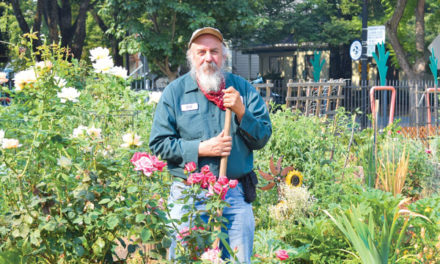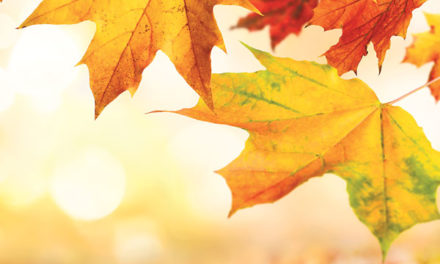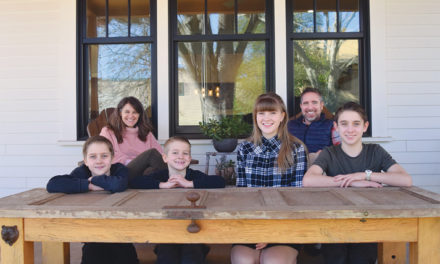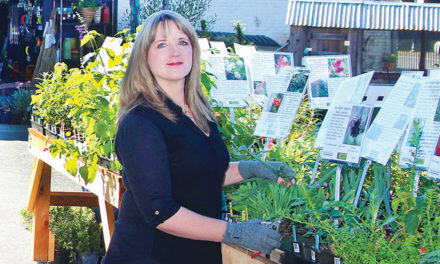The Big Blow
Strong winds can wreak havoc on trees
By Anita Clevenger
March 2019
Jan. 6 was a blustery day, followed by an even more blustery night. Winds gusted to nearly 60 mph. We’d been warned by weather reports and thought we had battened down the hatches.
Our climbing roses were pruned and secured to their archways. I’d cut back other long branches that might whip around. My husband cleaned the gutters and storm drains, and put away loose items. Let it blow!

The next morning was calm and clear. I went into the backyard and saw with satisfaction that the roses were fine. But why were things so light to the north?
One of our trees had fallen onto our neighbor’s house, taking down the entire side fence. The insurance company called it an act of God. However, could we mere mortals have done something to prevent the damage?
The tree was a 35-foot Chanticleer flowering pear, selected for its quick and columnar growth. We planted three of them 20 years ago along the fence for privacy and to create a green background for our garden.
At the time, I had no idea that young trees should be trained to maintain a single upright leading stem and to develop a good structure. I also didn’t know that ornamental pears are notorious for developing competing leaders and a proliferation of upright growth. Ours rapidly grew into congested messes. By the time I consulted an arborist, he advised it was too late to do much to improve them.
Generally, a tree uproots when it falls. This tree broke off at the ground. Apparently, the weight of its branches, even without leaves, caused the tree to sway until it snapped. Pears and other fruit trees are also notorious for soft wood.
While this tree’s roots didn’t seem to be rotten, that is a risk. We need to keep mulch, leaves, plants and excess soil from covering the base of all types of trees to encourage air flow to the roots and to discourage root rot. At a minimum, organic matter should be at least 6 inches away from the trunk.
There was no question that the pressure-treated fence posts were rotten. We’d let mulch and leaves pile up along the fence, contributing to its demise. The posts were set in concrete, but it was several inches below grade. Any type of wood will eventually decompose if it is in constant contact with moisture, soil and organic matter. We should have noticed that the bottom of the fence and posts were buried and cleared away the debris.
Fortunately, nobody was hurt and our neighbor’s house was not badly damaged. We cleaned up the mess and did some things to prepare for the inevitable next big storm. We now have a bright new redwood fence supported by steel posts encased in wood. We removed another of the pears and had professionals thin out two enormous podocarpus trees that had thick growth and long, heavy branches.
They also trimmed two younger Chanticleer pears that grow along our driveway. We hadn’t done too bad a job training them ourselves, but they have grown beyond our reach and could, in time, become hazardous.
Simple preventative measures seem so easy in retrospect. Why is it that, no matter how much we know, we keep learning the hard way?
Train your trees when they are young, monitor them throughout their lives, and have them trimmed periodically to keep them healthy and safe. Keep branches away from roofs and cut back roses and other shrubs before winter storms begin. Clear debris from the base of your fence, other wood structures and the foundation of your house. Keep organic material away from tree trunks to ensure that roots are healthy.
While January’s storm was a big one, high winds aren’t uncommon in Sacramento. We need to prepare. There are more blustery days ahead.
For information on how to train a tree, see “Training Young Trees for Structure and Form” by L.R. Costello at sacmg.ucanr.edu/files/254214.pdf.
Anita Clevenger is a Lifetime Sacramento County Master Gardener. For answers to gardening questions, contact the UC Master Gardeners at (916) 876-5338 or mgsacramento@ucanr.edu, or visit sacmg.ucanr.edu. The next Open Garden will be held March 9 from 9 a.m.–noon at the Fair Oaks Horticulture Center, 11549 Fair Oaks Blvd. in Fair Oaks.












































































































































































